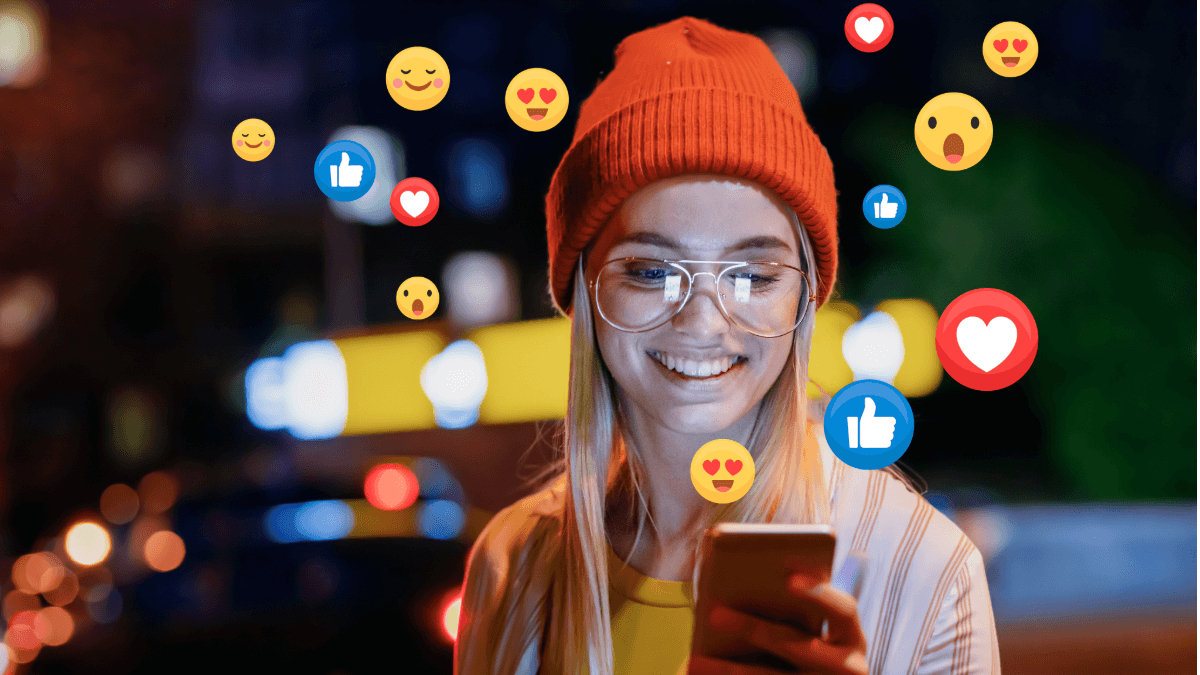
Scroll through any feed and you’ll notice it: the posts that make you hit save or send a link to a friend almost never look like ads. That’s earned media at work, and its monetary worth is summed up in one deceptively small KPI — Earned Media Value (EMV).
In the next few minutes we’ll untangle what EMV is, why brands chase it more than ever, and how you can nurture it without smothering it.

Example of a brand’s earned media value (green columns) © InfluencerDB
What is earned media?
Earned media covers every organic mention of your brand: stories, reposts, tags, stitches, reviews, memes — even that customer‑shot TikTok your social team didn’t know existed until it went viral. Unlike paid media (ads) or owned media (your website, newsletter or brand channel), earned media is the chatter you don’t pay for and don’t publish yourself. Earned Media Value is oftentimes described as the most trusted form of content for a brand.
Because it’s voluntarily created by real people, a solid EMV figure tells you you’re doing more than buying reach — you’re earning influence.
Why the Earned Media Value is so important for brands
Paid impressions rise and fall with your budget. Earned impressions snowball. When other people talk, algorithms listen, which is why EMV is fast becoming a north‑star metric for influencer marketing platforms, growth‑hungry startups and legacy giants alike.
“If owned media is the destination, earned media is the vehicle that gets people there.”
A healthy EMV usually means two things:
- Your owned content strategy is resonating; you gave audiences something worth sharing.
- Your paid campaigns lit the spark without looking like a hard sell.
Need proof? Take a quick look at brunch‑loving creator Brittany Xavier.
No ad disclosure, no promo code — yet her casual tag of a neighbourhood café flooded the comments with “Where is this?” and “Adding to my NYC list!”. That single unpaid post generated hundreds of dollars in EMV for the restaurant, dwarfing what a boosted Story would have cost.
Earned media equals credibility
You can shout “world’s best latte” all day long, but when a regular patron posts an unsolicited rave review, social proof kicks in. Nielsen’s Global Trust in Advertising study found that:
- 83 % of people trust recommendations from friends and family.
- 66 % trust consumer opinions posted online.
That’s why forward‑thinking influencer marketing agencies obsess over EMV. The more genuine the buzz, the less resistance at checkout — a timeless truth whether you sell luxury handbags or SaaS subscriptions.
How controllable is earned media?
Here’s the rub: you can’t script earned media. Toyota learned that the hard way during its wave of safety recalls. Criticism surged, and no amount of ad spend could mute it. Instead, Toyota put its faith in brand advocates.
Owners flooded Instagram with #LetsGoPlaces nostalgia, re‑anchoring the brand to emotion rather than crisis. The episode underlines a brutal but beautiful reality: you can guide the conversation, never command it.
Which factors affect the earned media value?
Not every mention is created equal. Our own social media analytics tools show four variables that move EMV the most.
1. Where the brand is mentioned
- Text mention only (approx. 75 % weight)
- Pilot Maria name‑drops GoPro in her caption but skips the photo tag. Because the text sits front‑and‑centre in the feed, it’s still a heavyweight mention.
- Photo (or video) tag only (approx. 25 % weight)
- Fashion‑forward traveller Erik Forsgren quietly tags luggage brands in the image itself. Valuable, yes, but less visible unless viewers tap the post.
- Both text and photo tag (100 % visibility)
- Negin Mirsalehi goes all‑in, doubling up on a picture tag and a caption shout‑out for Louis Vuitton. That combo maximises EMV by covering every engagement habit.
2. Single vs. multiple brand focus
Compare these two grids:
- Single‑brand spotlight
- Elle Ferguson features just one product (Bondi Sands), so 100 % of the earned value flows to that tanning label.
- Multi‑brand flat‑lay
- Kiara King scatters a dozen logos in a lifestyle still. Great aesthetic, but each brand receives only a slice of the attention pie.
3. Creator reach & engagement
A microinfluencer with a 25 % engagement rate can outrank a nano influencer ten times her size when it comes to EMV — proof that quality of community beats raw follower count.
4. Content format & platform CPM
Reels, Shorts and TikToks typically command higher EMV multipliers than static posts because video CPMs are steeper.
(Pro‑tip: your social media competitor analysis dashboard should adjust automatically for each format so you aren’t comparing apples and oranges). Curious what timeless tactics still work? Revisit The Influencer Campaigns That Stole 2017 and the lessons they teach for 2025.
The Takeaway
Earned media is unpredictable, occasionally messy, yet priceless. By focusing on customer experience, nurturing real relationships and giving creators artistic freedom, you’ll:
- Turn satisfied buyers into outspoken advocates.
- Lower your acquisition cost compared with purely paid pushes.
- Build trust that no banner ad can match.
Ready to quantify your buzz?
Run a free EMV audit inside our influencer marketing platform and uncover the posts that already sell your brand for you — no credit card, no strings.



